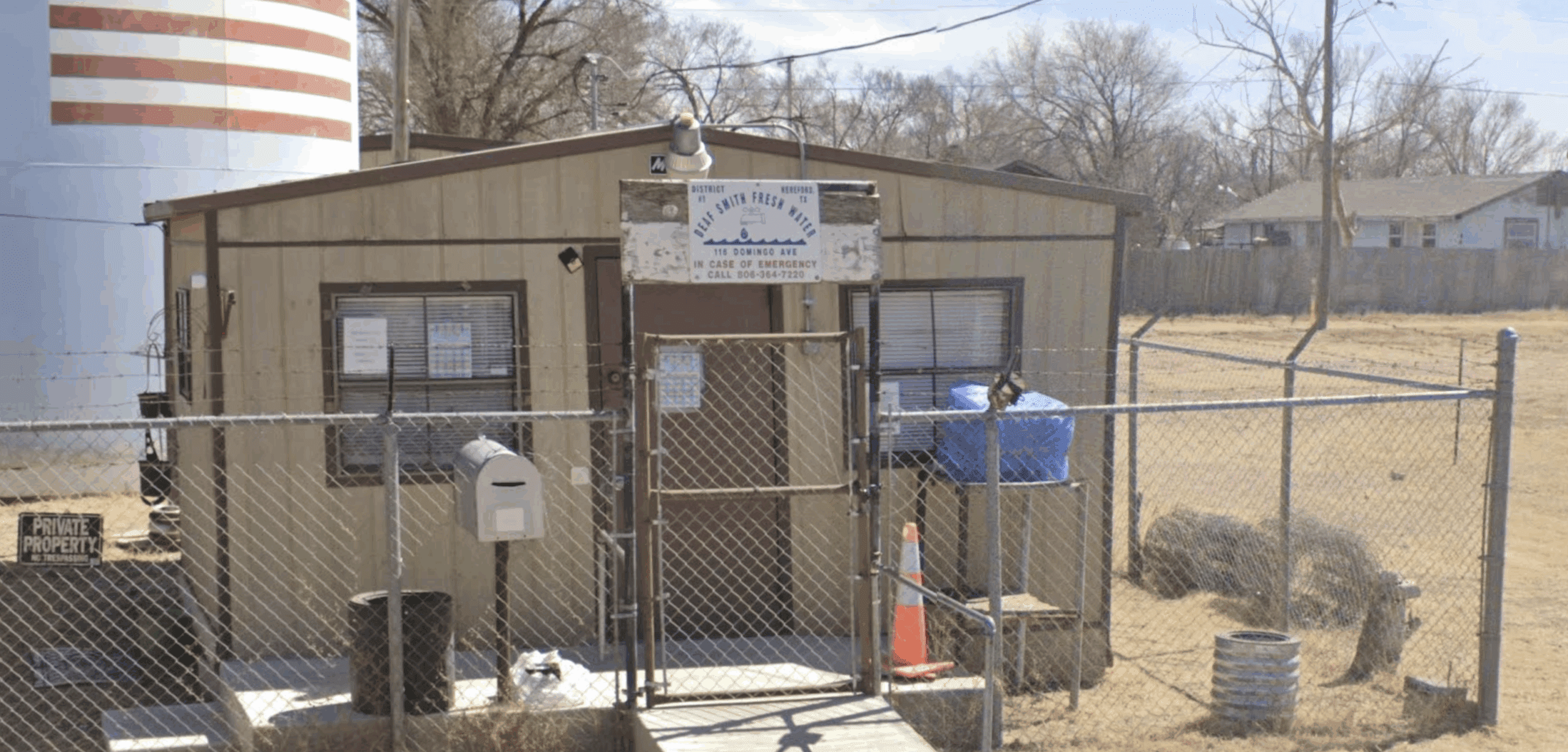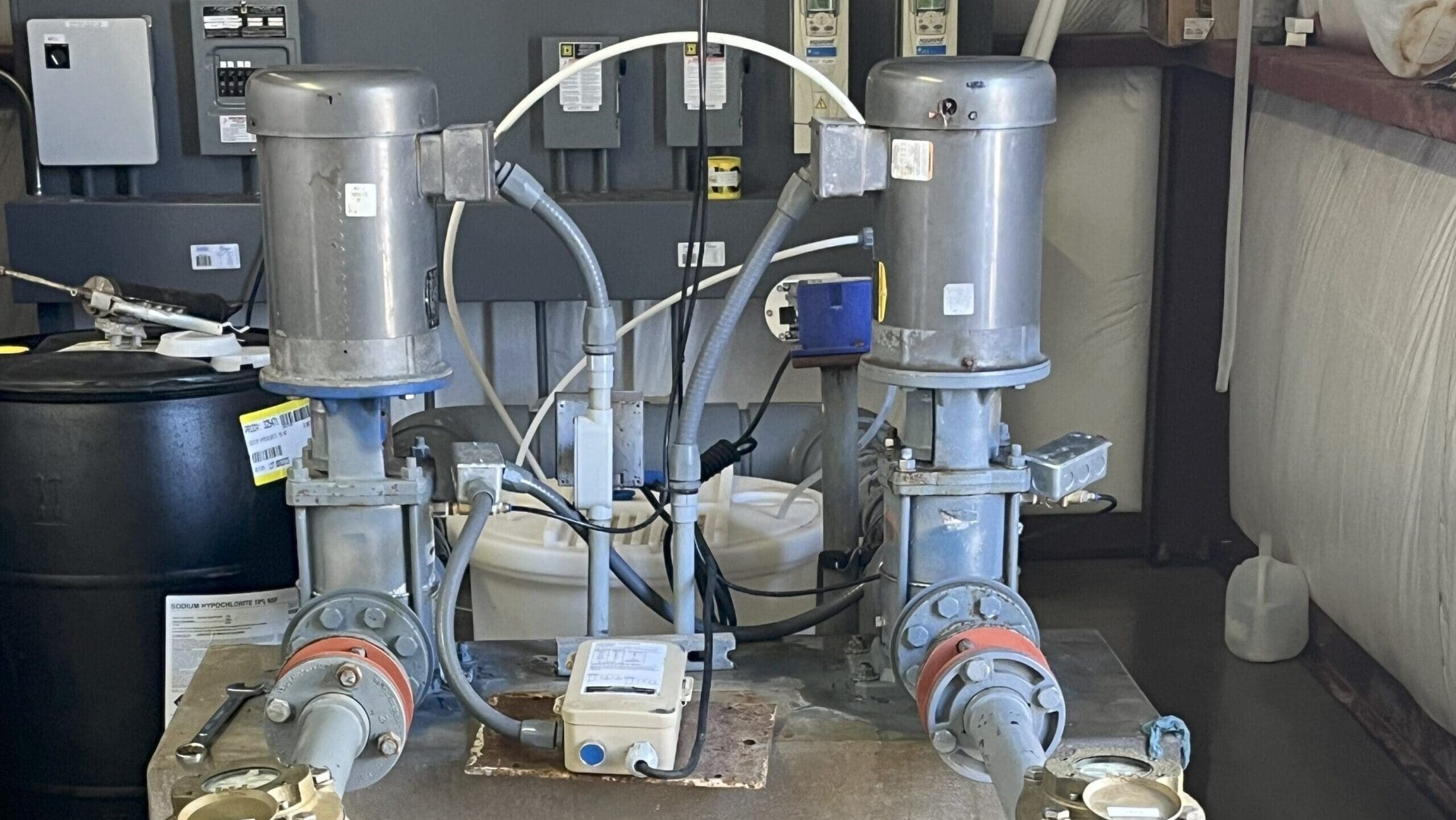Roughly 50 miles southwest of Amarillo, Texas, in the windswept plains of Deaf Smith County, a once-overlooked rural water system is slowly regaining its footing after years of disarray. Deaf Smith County Fresh Water Supply District #1 (FWSD #1), which serves a small unincorporated community near Hereford, is making progress toward long-term stability after sweeping leadership changes and renewed partnerships opened the door to funding and technical assistance.
For years, the system struggled under poor governance. Key operational decisions were controlled by a longtime manager who also served as the certified water operator. With no clear oversight, board terms quietly expired, financial records vanished, and accountability collapsed. In one of the most critical missteps, the district lost a $173,000 grant for a much-needed storage tank after the manager refused to provide documentation to county commissioners and threatened legal action. The board backed down, and the opportunity slipped away.

That’s when Johnny Enriquez stepped in.
A concerned resident, Enriquez discovered that all board member terms had lapsed — some for years. He contacted the Texas Secretary of State, gathered the necessary documentation, and presented the case to county commissioners. A new board was appointed in early 2024, with Enriquez named board president that May. It was a pivotal moment for a system on the verge of collapse.
What Enriquez inherited was far from functional. Financial reserves had been depleted. System records were missing. One of the two lift station pumps had already failed, triggering costly emergency maintenance. The booster pump station was plagued by recurring airlocks that caused service interruptions. Then the second lift station pump failed — leaving the district with no redundancy and a looming crisis.
At the same time, the outgoing manager had not gone quietly. She refused to share information, deleted records, and filed complaints with the Texas Commission on Environmental Quality (TCEQ), triggering compliance investigations that further drained the district’s limited resources.
“She was there for 26 years,” Enriquez said. “We gave her the option to stay if she followed our rules. But she said, ‘It’s my show. I’m running things.’ So, we said, ‘Not anymore — you’re fired.’”
Facing mounting challenges, Enriquez needed help. Communities Unlimited (CU) had previously worked with the district in 2020, providing technical assistance and helping apply for a Community Development Block Grant (CDBG) for a new standpipe. Though the project stalled due to internal dysfunction, the relationship left a door open.
Support returned thanks to a referral from Lara Escobar, Vice President of Community Investment at the Amarillo Area Foundation, who expressed deep concern for the unincorporated community of San Jose, where Deaf Smith FWSD #1 is located. Escobar flagged the district’s deteriorating condition and connected CU’s Community Facilitator William Thrasher from the Community Sustainability Team to the project. When Thrasher reached out to the district, they recalled a previous partnership with CU and specifically mentioned West Texas Coordinator Kurt Grant from the Community Infrastructure Team. Thrasher reached out to Grant, who confirmed that CU had provided support in the past.
The situation was worse than expected. The former manager had taken all the district’s records — financials, plans, and documentation — upon her departure. Thrasher and Grant made a site visit and met with the new board. They saw a team ready to rebuild, despite the odds. Grant was relentless in helping the district track down what documentation still existed, while Thrasher worked to reconnect the system with funding sources.
Around that time, CU’s Lending Team was rolling out a new low-interest loan product for water and wastewater projects. Senior Economic Development Loan Officer Chris Ranniger shared program details with Thrasher, who let him know that while Deaf Smith couldn’t act immediately, the need was urgent. Over the following months, CU helped the district regain its footing and begin working toward real solutions.
CU provided steady guidance. Grant shared financial templates and model policies to help reestablish records and meet audit requirements. Thrasher coordinated with USDA Rural Development, which agreed to assist the district with grant-readiness and funding eligibility.
The district’s most urgent need was to replace the failed lift station pump. The contractor offered to install the new pump and spread the $15,000–$20,000 cost over six months — but the district couldn’t afford the $2,500 monthly payments without depleting what little reserves they had rebuilt.
“I told them to install the darn thing, and if I had to pay out of pocket, I would,” Enriquez said.
That’s where CU’s Lending Team stepped in. In June 2025, CU approved a $20,000 loan at just 3% interest, lowering the monthly payment to $193. “You can’t ask for a better deal than that,” Enriquez said. “It was quick and painless — no runaround like banks give you.”

CU also helped the board reassess its water rates, introduced asset management concepts, and provided sample budgets and policies. Since then, the board has raised rates twice to stabilize operations — first by $5, then by $10 per customer.
“We weren’t in a hole — we were drowning,” Enriquez said. “Now we’re close to breaking even. If nothing else breaks down, we’ll be okay.”
Meanwhile, internal structure has returned. Meetings are held regularly. Files are being rebuilt. Repairs continue. And community trust is beginning to rebound.
“The residents are more at ease now. They’re happy we made a change,” Enriquez said.
Still, the district’s long-term recovery hinges on securing additional investment. Previously ranked third on the state’s funding list, FWSD #1 dropped to 16th following the failed grant. Their next request — estimated at $750,000 — will include a new storage tank, well replacement, generators, water meters, and an updated chlorine system. If denied, they must wait two years before reapplying.
“They told us we need to show that we care about our system,” Enriquez said. “So, we’re going to keep working to maintain it.”
Until then, CU will continue to support the board as it strengthens operations, rebuilds trust, and restores critical services. Formed in 1979 with grant funding from the State of Texas, Deaf Smith FWSD #1 currently maintains 90 active and 10 inactive connections. With steady leadership, targeted technical assistance, and patient investment, the district now has a fighting chance.
“You all are lifesavers. We were literally down on the ground, and people were kicking us while we were down. Kurt and William came in and really did a service for us. I hope we can keep working together.”
— Johnny Enriquez, Board President of Deaf Smith FWSD #1
For the first time in years, Deaf Smith FWSD #1 isn’t just surviving — it’s rebuilding. And that’s a story worth following.
“In the past year, Deaf Smith Fresh Water Supply District #1 has made significant leadership changes for the better,” Grant said. “This new leadership allowed CU to help in many ways, including a competitive loan.”
And from Thrasher’s perspective: “What was once a hopeless situation has turned into one with real possibility. I believe this is just the beginning. As others in the region see the progress being made, I think more support will follow. It’s already starting to snowball.”

